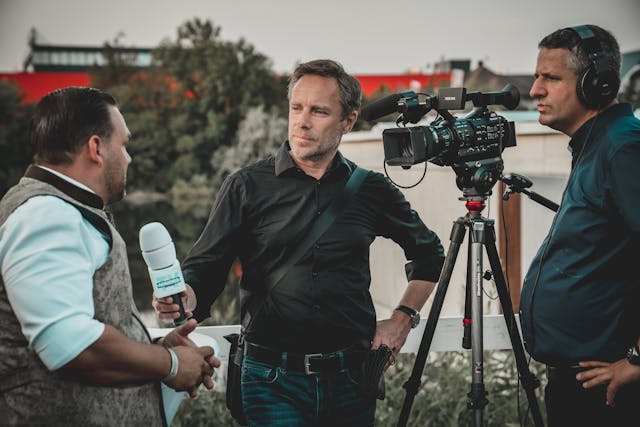It’s no longer a luxury to have a social media presence and be active online. It’s a baseline requirement no matter what size of company you are today. For businesses that are trying to grow, remain relevant or connect with people, having an active social media presence is now a baseline requirement. Social media has become one of the most cost-effective and accessible ways to connect with audiences, create awareness or engagement, or generate a desired outcome.
And in a country like India, with over 400 million users active on social channels like Instagram, Facebook, LinkedIn, and Twitter, the use of social media for business is priceless. But the thought of jumping into the world of social media can feel overwhelming and full of jargon to understand, especially when you’re just starting with it. This blog post provides a sensible, practical guide for beginner businesses looking to grasp social media marketing in India.
In this blog post, we will address what social media marketing is, how to get started and finally why it is useful to your business.
What Is Social Media Marketing?
Simply put, social media marketing is using platforms like Facebook, Instagram, LinkedIn, YouTube, and Twitter to market your products, services or brands. But it is more than just updating status every now and then. Social media marketing requires an understanding of your audience, generating content that resonates with them, and the use of analytics to enhance and improve your activity.
With traditional marketing techniques, your communication was one-way. With social media marketing, your communication can be two-way communication: You’re not just talking at them, you’re talking to them. You are engaging with your audience, responding to their feedback, responding to their comments, and participating in the conversation.
What Makes Social Media Marketing Effective in India
India is one of the fastest-growing digital economies in the world, with users from every tier, ranging from urban metros to smaller towns, actively consuming content on mobile devices. That makes platforms like Instagram Reels, YouTube Shorts, and regional language content more powerful than ever before.
Here’s why social media marketing in India stands out:
- Massive reach: India has the second-largest number of social media users globally.
- Diverse audience: From Gen Z college students to middle-aged homemakers, the Indian digital audience is vast and varied.
- Cultural trends: Content formats like memes, festival campaigns, cricket posts, and Bollywood tie-ins often outperform generic promotions.
- Mobile-first mindset: With most users accessing social platforms via smartphones, formats such as vertical video, stories, and bite-sized content are most effective.
Picking the Right Platforms
Not every platform suits every business. Your choice depends on your goals, audience, and content style. Here’s a basic breakdown:
- Instagram: Ideal for visual brands, direct-to-consumer (D2C) products, fashion, food, and content creators.
- Facebook: Useful for running paid ad campaigns and building community groups.
- LinkedIn: Ideal for B2B marketing, professional services, and recruitment.
- X (formerly Twitter): Best for real-time updates, trending topics, and customer support.
- YouTube: A long-term platform for educational, explainer, or entertainment content.
If you’re targeting regional audiences or working in niche categories, don’t ignore platforms like ShareChat, Moj, or even WhatsApp Communities.
Key Components of Social Media Marketing
Once you’ve selected the platforms, it’s time to focus on execution. Effective social media marketing revolves around a few core pillars:
- Content Strategy
Plan your posts with a consistent brand voice and a mix of content types, including educational, entertaining, promotional, and conversational content. - Content Creation
Invest in visually appealing graphics, engaging captions, short-form videos, and relatable storytelling. In India, mixing Hinglish or regional language captions often works well. - Publishing Schedule
Consistency matters. Use tools like Meta Business Suite or Buffer to plan and schedule your posts. - Community Engagement
Respond to comments, participate in trends, run polls, and show up authentically. People are more likely to trust a brand that feels human. - Performance Tracking
Monitor what’s working (and what’s not). Track metrics like reach, engagement, saves, shares, and conversion rates. Adjust your strategy based on this data.
Getting Started: A Step-by-Step Approach
If you’re entirely new, here’s how to take the first few steps:
- Define your goals: Are you looking for brand awareness, leads, website traffic, or customer engagement?
- Know your audience: Build detailed personas with demographics, interests, and habits.
- Choose 1–2 platforms to begin with: Focus on where your audience already spends time.
- Create 10–15 pieces of content in advance to maintain consistency. Keep a content bank ready.
- Post consistently for at least 2–3 months: Organic growth takes time, but it is worth the effort.
- Run small-budget ads: It can help you test what’s working.
- Analyse and adapt: Refine your strategy based on monthly insights.
Common Mistakes Beginners Should Avoid
Many brands make the mistake of treating social media like a loudspeaker. Here are a few rookie missteps to steer clear of:
- Being overly promotional: Aim for value-first content, not just product pitches.
- Ignoring comments and DMs: Engagement is a two-way street.
- Copy-pasting content across platforms: Each platform has its own tone and behaviour.
- Not adapting to trends: Don’t ignore trending sounds, formats, and events, and use them thoughtfully.
- Skipping analytics: You can’t improve what you don’t measure.
Where Professional Help Makes a Difference
While getting started is doable, scaling your social media efforts into real business outcomes often requires strategic thinking. This is where working with a social media marketing agency within India can help. Agencies bring expertise in crafting platform-specific content, running performance campaigns, and understanding regional and cultural nuances.
For example, RepIndia offers services that cover both national and regional market dynamics, helping brands design campaigns that resonate with Indian audiences and adapt to changing digital trends. Their deep understanding of social media platforms, combined with performance tracking and content strategy, can make a significant impact as your brand grows.
The Long-Term Payoff
Social media marketing doesn’t deliver overnight success. But over time, consistent effort pays off – not just in terms of likes and follows but in stronger brand perception, increased customer trust, and even improved SEO.
In India’s highly social, digitally connected environment, your online presence is as critical as the products or services you offer. For many customers, social media is the first and sometimes only touchpoint with your brand.
There’s a growing preference among Indian brands to partner with agencies that truly understand both content and culture. Some of the best digital marketing agencies in Kolkata, like RepIndia, have built a reputation for blending strategy with local insight, helping businesses shape campaigns that resonate beyond just numbers. Their experience with diverse sectors gives them an edge in navigating evolving audience behaviours without overcomplicating the process.
Final Thoughts
Getting started with social media marketing in India might feel overwhelming at first, but with the right mindset and tools, it becomes a powerful way to connect with your customers and grow your brand. Focus on clarity, consistency, and genuine engagement. Whether you’re a small business in a Tier-2 city or an emerging D2C brand in a metro, there’s space for you to make your mark.
And remember, while organic efforts go a long way, having expert support in your corner, from content planning to performance marketing, can help you fine-tune and accelerate your digital growth journey. As you build your presence in the evolving social media landscape, keep it simple, stay true to your voice, and be prepared to adapt.
![A Beginner’s Guide to Social Media Marketing[1]](https://www.theshowbizshine.com/wp-content/uploads/2025/06/A-Beginners-Guide-to-Social-Media-Marketing1.png)


